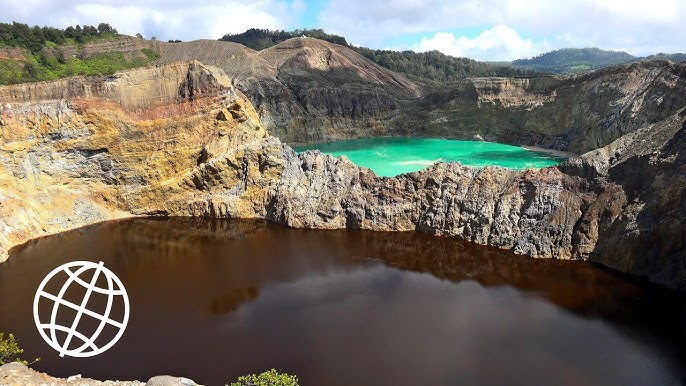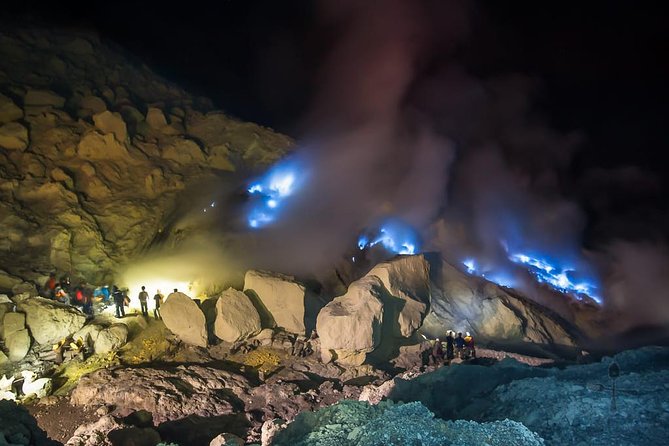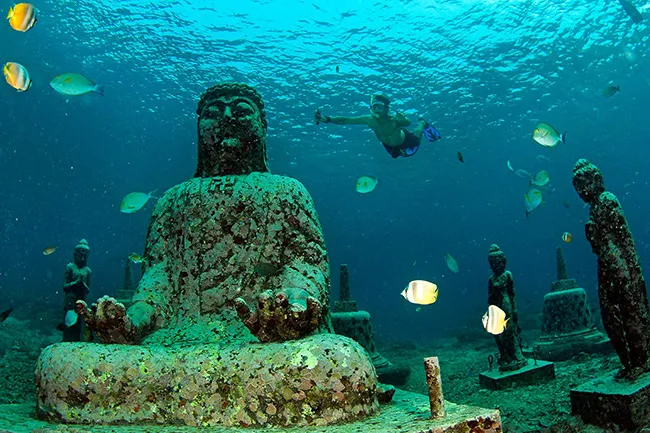Bali is known for beaches and temples, but underneath its waters lies a lesser-known attraction: submerged temple sites filled with stone statues, gateways, and shrines covered in coral. These underwater temples are located in areas like Pemuteran and Nusa Lembongan, where conservation groups intentionally placed structures to encourage coral growth and create artificial reefs.
The statues are designed in traditional Balinese style, featuring guardian spirits, seated Buddhas, and archways reminiscent of ancient kingdoms. Over time, the sea transforms these sculptures, covering them with algae, soft corals, and barnacles that create an organic fusion of art and nature. The result feels like exploring a forgotten mythological city, slowly reclaimed by the ocean.
Divers say the atmosphere is unlike typical coral spots. Swimming past stone gates while schools of fish dart between carved faces creates a dreamlike sense of wandering through sacred ruins. The sunlight filtering from above adds dramatic shadows that enhance the spiritual mood.
These underwater temples are not relics from ancient times but conservation projects aimed at restoring marine life damaged by overfishing and climate stress. The structures serve as foundations that attract coral larvae and give marine organisms new habitats. Over years, these areas have transformed into flourishing ecosystems full of biodiversity.
For tourists, the temples offer a combination of culture, environmental education, and adventure. Beginners can snorkel in shallow waters, while advanced divers can explore deeper chambers and coral forests. Eco-tourism organizations also conduct volunteer programs where visitors help monitor reef health or assist in coral grafting.
Bali’s underwater temples are a reminder that heritage does not always sit on land. Some structures evolve underwater, merging human creativity with ecological restoration




